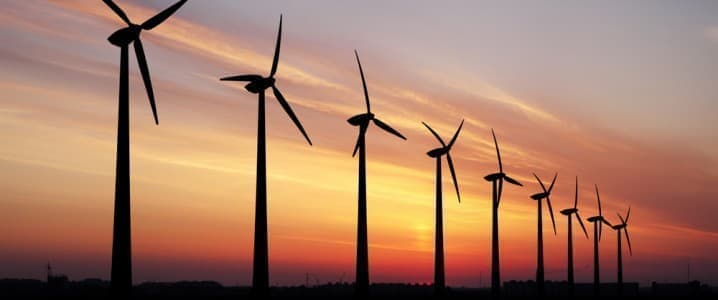Texas is suffering a major heat wave. Three-digit temperatures are straining the state’s grid and earlier this month prompted ERCOT, the Lone Star State’s grid operator, to ask Texans to conserve energy. It also severely affected wind power generation.
Bloomberg reported this week that wind turbines in Texas are operating at just 8 percent of their capacity because of low wind speeds. This is really unfortunate because demand for electricity is on a strong rise because of the weather.
There is a certain irony that the biggest wind energy generator in the U.S. cannot utilize its capacity to serve its citizens at a time of peak demand. But it is certainly no surprise that this is happening. Wind power generation depends entirely on the weather; when the weather is unfavorable, generation drops.
Europe was reminded of the importance of wind speeds last year when these fell below average, causing lower than normal wind power output and partially contributing to the energy crunch that hit much of the continent in the autumn. The wind industry recognizes this fact: wind industry journal WindPower Monthly had an article that explained how wind park output depended more on wind speeds than on turbine performance, regardless of the age of the turbines.
Vestas and Ørsted, the world’s turbine manufacturing leaders, both said their financial results for 2021 were affected by low wind speeds. The industry is not hiding the direct relationship between wind output and wind energy output. Politicians, on the other hand, would much rather not talk about it.
When the Texas Freeze left thousands without power for hours and, in some cases, days, critics slammed the overbuild of wind turbines in the state because they froze during the cold spell. In truth, so did gas wells, and so did gas-fired power plants. It was everyone’s fault that Texas froze. Both fossil fuels and renewables failed. But while gas-fired plants can be winterized, turbines will not turn when there is no wind.
“A combination of extreme peak demand, low wind, and high outage rates from thermal generators could require system operators to use emergency procedures, up to and including temporary manual load shedding,” the North American Electric Reliability Corporation said in its Summer Reliability Assessment report released earlier this year.
The report made references to solar farm shutdowns in Texas and California last year, saying these disrupted the operations of conventional power plants and caused outages. The shutdowns were caused by power inverters: devices that connect wind and solar farms to high-voltage lines. Unless correctly programmed, these can—and did—shut down, causing a grid disruption.
Related: ESG Funds Reel As Investors Pile Into Energy And Defense Stocks
But while one can program the power inverters of wind and solar farms, there is no way to make the wind blow on demand. This was demonstrated by NERC’s warning to ERCOT’s fellow in the Midwest, the Midcontinent Independent System Operator, or MISO, that parts of the area under its management are under threat from blackouts this summer.
“More extreme temperatures, higher generation outages, or low wind conditions expose the MISO North and Central areas to higher risk of temporary operator-initiated load shedding to maintain system reliability,” NERC said.
As the Bloomberg report from this week notes, the relationship between high atmospheric temperatures and low wind speed is not exactly news. It is a well-documented relationship between high-pressure weather systems that push temperatures up, at the same time sapping wind speeds. It is also quite an inconvenient relationship for wind power in the summer.
The problem becomes more serious when it’s not just a transitory high-pressure system that affects wind speeds. Last year in central and northwestern Europe, average wind speeds were assessed to have been about a tenth lower in some parts throughout the year. Other parts of Europe saw stronger than normal winds and that was good for them but, again, unfortunately, wind cannot be ordered on demand.
This latest manifestation of the phenomenon called intermittency will probably spur yet another discussion of battery storage. Full of promise, battery storage has enjoyed quite some time in the renewable energy spotlight. What it hasn’t enjoyed is mass buildup, even though last year saw the United States’ battery storage capacity increase threefold to 4.63 GW.
The EIA said at the time it expected U.S. battery storage to expand by another 10 GW by the end of 2023, with more than 60 percent of this capacity getting paired with solar farms. That’s certainly good news: the sun, at least, shines every day or almost every day. The question remains: what do wind turbines do when there is simply no wind?
The answer, from a hard-core transition perspective, would probably be along the lines of backing up wind with solar and vice versa. This would require redundancy in the form of a lot more generating capacity than is actually necessary to produce the electricity needed for a certain populated area. The problem is, people are turning on renewables.
What was going to be the largest solar farm in the U.S. got canceled last year because of opposition from the locals. Wind turbines have been blamed for hundreds of thousands of bird deaths every year in the U.S. alone. Perhaps low wind is, in a way, good news, at least for birds.
By Irina Slav for Oilprice.com
More Top Reads From Oilprice.com:
- Boris Johnson Resigns As Energy Crisis Worsens And Scandals Mount
- The EU Has Frozen $13 Billion In Russian Assets
- Solar Stocks Soar As China Considers $220 Billion Stimulus Package



















Power inverters are devices which convert DC to AC.
How do you program a power inverter?
I haven't the faintest idea - and I had 38 years experience as a proffesional computer programmer, including a spell as Chief Programmer for a Fortune 500 company.
Please enlighten me.